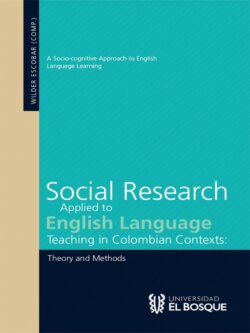Читать книгу Social research applied to english language teaching in Colombian contexts - Wilder Yesid Escobar Alméciga - Страница 10
На сайте Литреса книга снята с продажи.
The Linguistic Typology of Verb Structure: A Comparative Approach for the EFL Classroom Introduction
ОглавлениеAny teacher of English as a foreign language will attest that English verb construction in colloquial speech presents, quite possibly, one of the largest obstacles in L2 English language acquisition. The difficulty related to the comprehension of the syntactic and semantic properties of English phrasal verbs1, particularly those expressing events of motion, has been indicated by numerous researchers (Ganji, 2011; Ibarretxe-Antuaño, 2004; Ionin & Zubizarreta, 2010; White, B. J., 2012). In their examination of English verb construction, they have pointed directly to the specific linguistic phenomena that make English structurally different from Spanish. These differences, it has been argued, often transfer from the learner’s L1 and hinder the development of L2 English ability (Almeida, 2002; Brown & Gullberg, 2010; Cadierno, 2004; Casado Antoniazzi, 2010; Slobin, 1987).
In accordance with the aforementioned research findings, there exist abundant resources for phrasal verb teaching designs and classroom practices aimed at increasing EFL students’ comprehension and production within this capacity (Alejo González, R., Piquer Píriz, A. & Reveriego Sierra, G., 2010; White, B. J., 2012). However, much of the previous research, as well as the bulk of the proposed instructional design, fail to elucidate the specific syntactic dissimilarities that exist between English and Spanish verb structure. Researchers merely acknowledge such a linguistic dichotomy, yet rarely attempt to develop didactic knowledge in this area (Alejo González et al., 2010; Casado Antoniazzi, 2010; Larrañaga, P., Treffers-Daller, J., Tidball, F. & Gil Ortega, M., 2011; Pozdnyakova & Gunina, 2011; Spring, 2010). As noted by White (2012), “teaching suggestions are often confined to brief pedagogical applications sections at the end of research articles” (p. 420) and, consequently, offer little in terms of instructional guidelines.
The goal of this chapter, however, is perhaps a bit more ambitious. There is a pressing need to recognize the difference in linguistic structuring, referred to henceforth as typology (Talmy, 2000), and to communicate this knowledge both to EFL teachers and their students alike. As such, this chapter carries two distinct objectives in relation to the English phrasal verb construction enigma. First, the typological differences which dictate Spanish and English verb construction will be interpreted within the realm of phrasal verbs, thus providing educators with the essential expertise to incorporate this knowledge into the EFL classroom. Secondly, didactic strategies for phrasal verb instruction grounded on the current research within the field of cognitive linguistics will be discussed as to provide novel approaches to EFL instruction. It is hoped that the EFL instructor will take away a new understanding of English verb construction so that a clearer picture may be delivered to L2 English learners.
